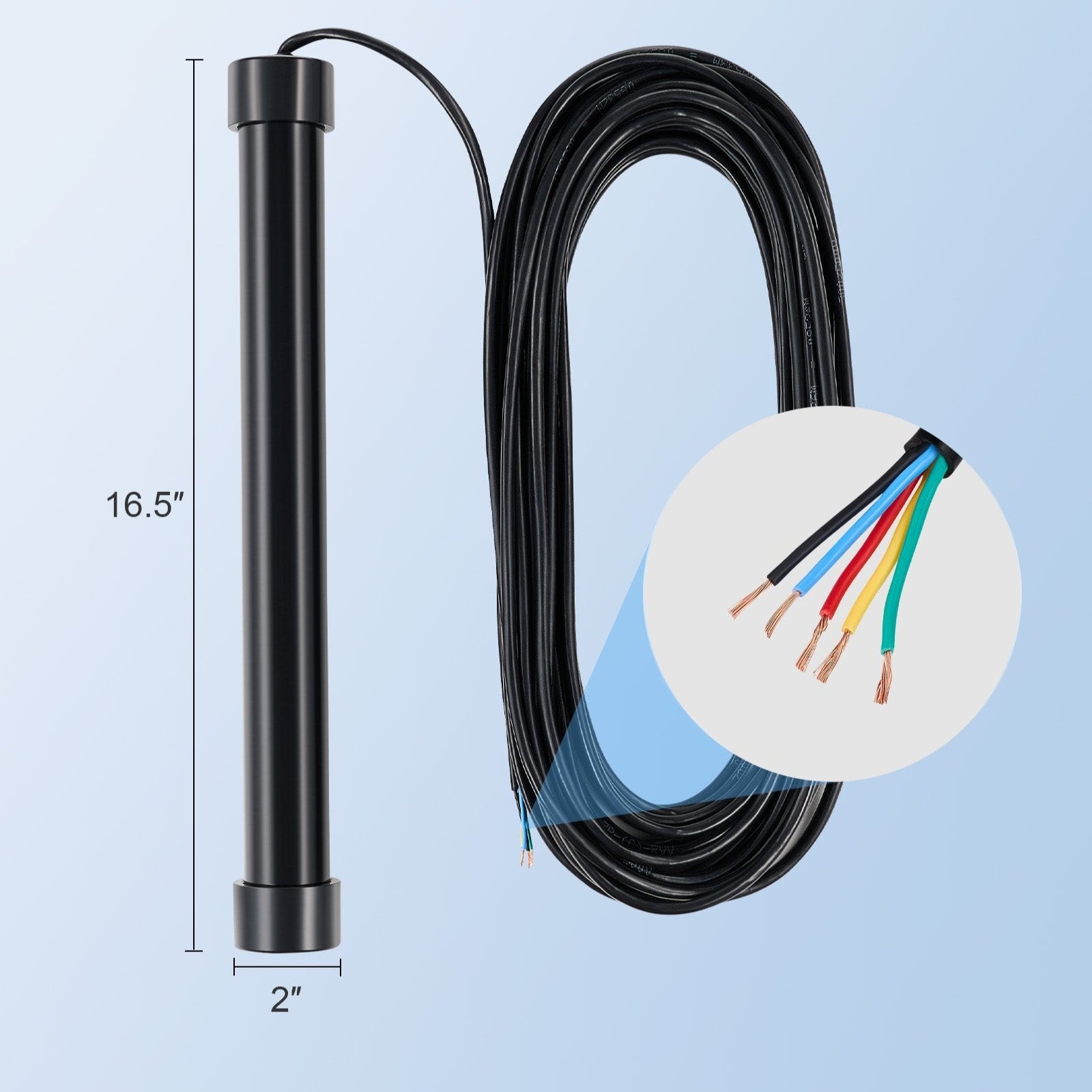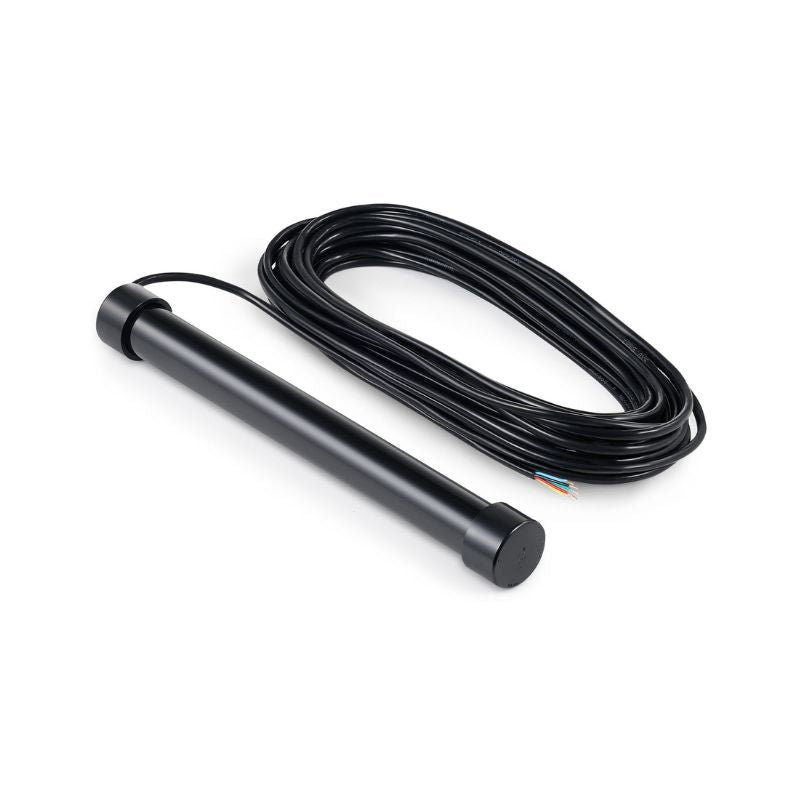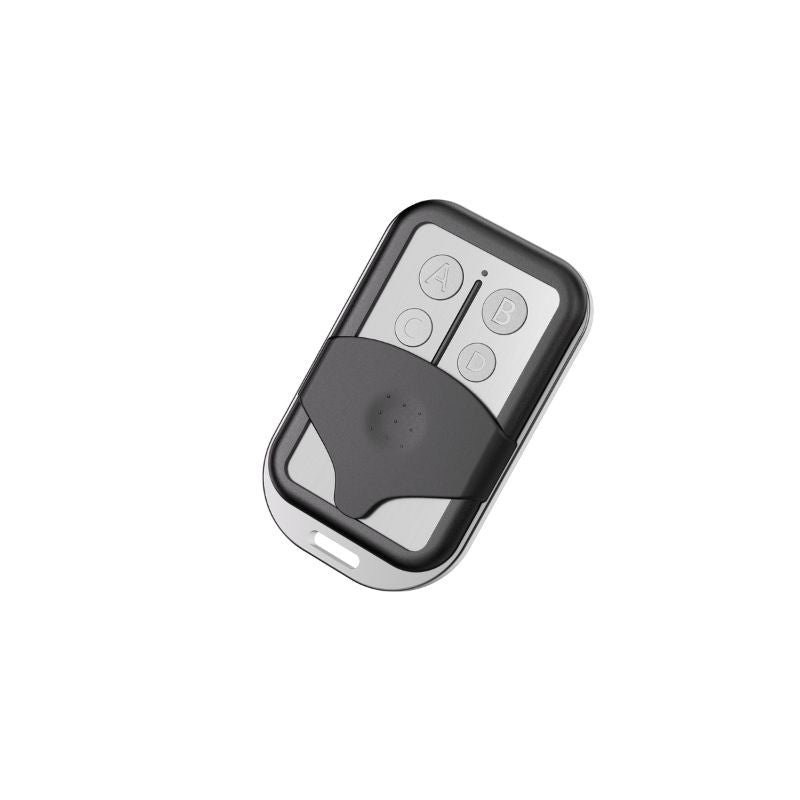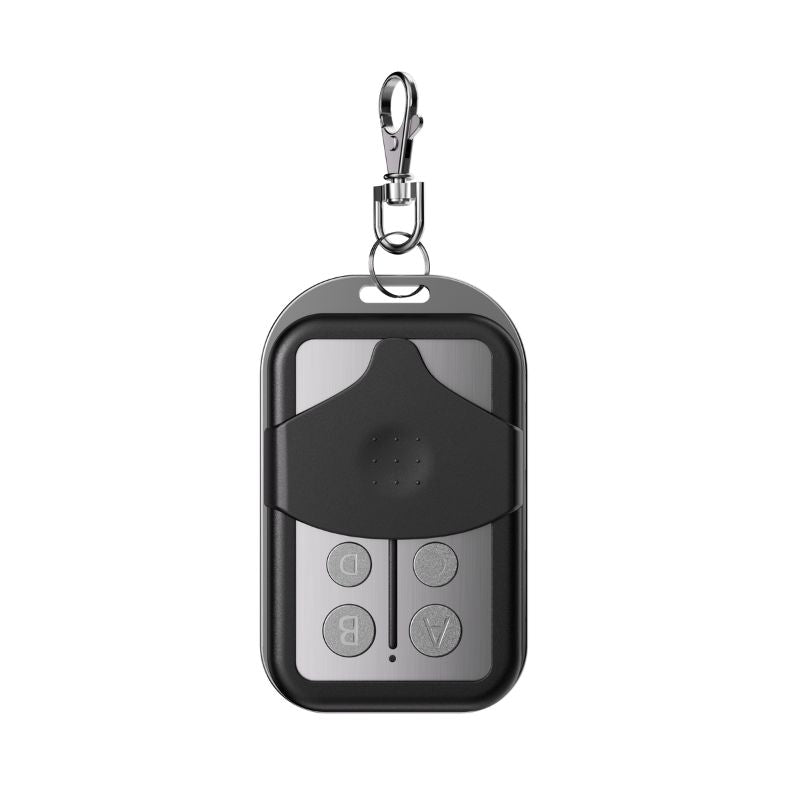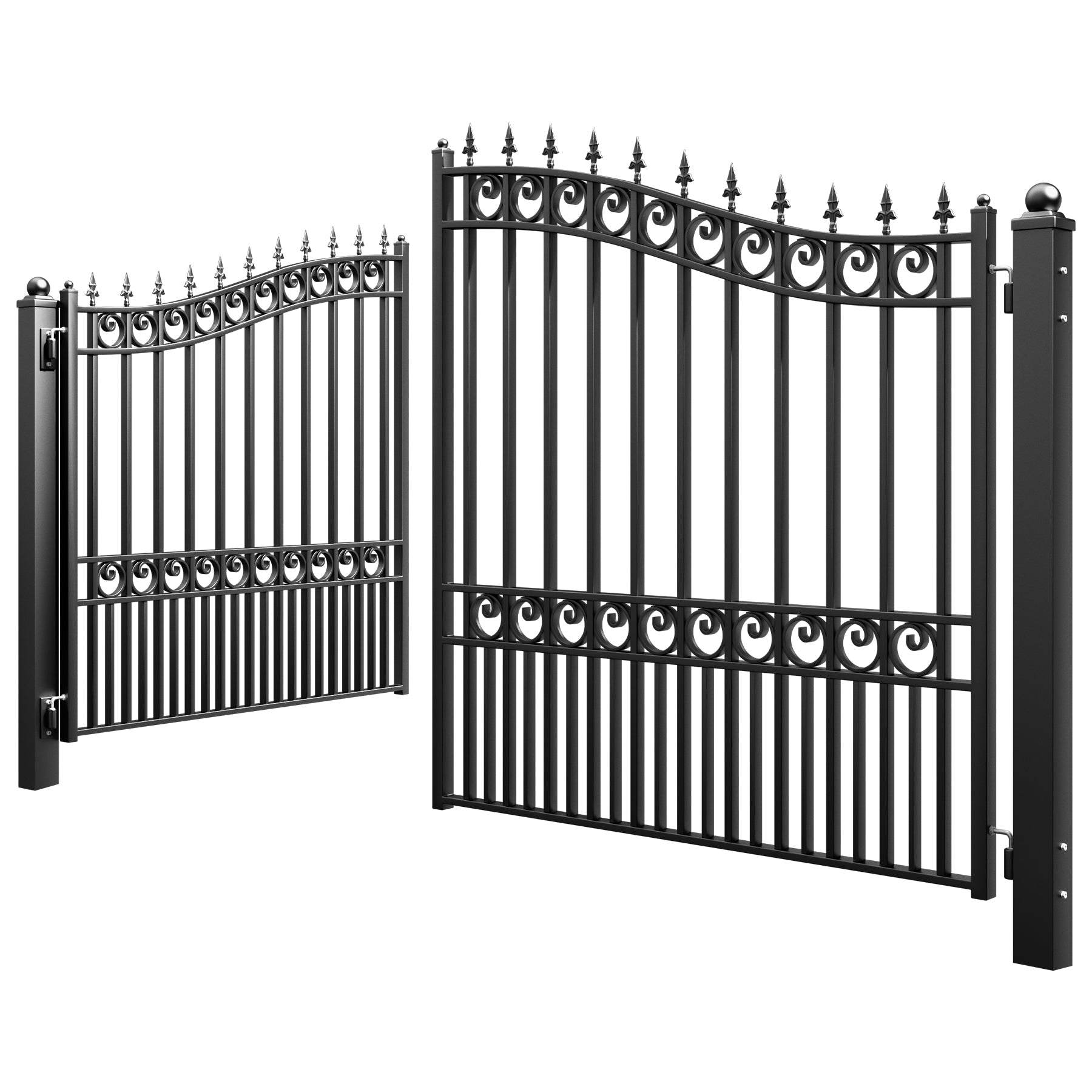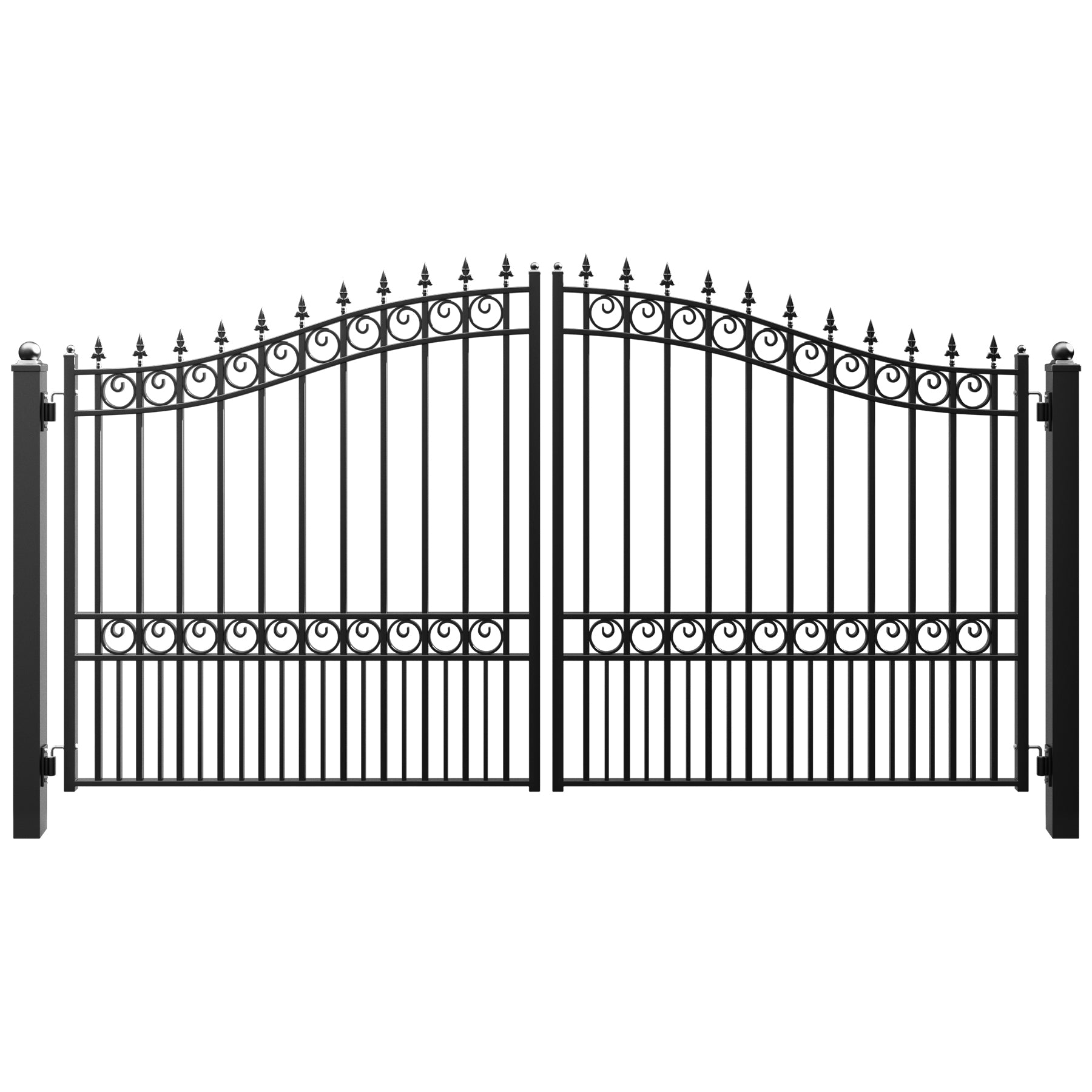If you are considering a solar gate opener, the first question you might want to ask is: What size solar panel do I need? When you install a solar panel, you're not just getting a piece of hardware; you're tapping into the sun to generate usable power for your home, RV, cabin, or devices.
So, how much power can a solar panel really generate in a day?
Let’s break it down.
How Much Power Can a Solar Panel Produce in a Day?
The daily energy production of a solar panel is measured in watt-hours (Wh). As a rule of thumb, the amount of power a solar panel produces per day is its rated wattage (50W, 100W, etc.) multiplied by the number of peak sun hours per day.
For example: A 100W panel × 5 sun hours = 500 Wh per day
In order to account for factors like the location of the panel, temperature changes, etc., you can multiply that total by a percentage. You decide on the percentage to use by evaluating how well you think your solar panel reflects the ideal scenario.
- If the solar panel is properly mounted, facing the right direction, with no shading, and the sunlight is intense, you can go for 95%.
- Lower the percentage if it is not properly mounted, shaded, or if the sunlight is not intense enough.
The Solar panel size (measured in watts) indicates instantaneous power output in ideal sunlight. Here's a rough estimate based on average sunlight:
- A 100W solar panel can produce about 300–600 Wh per day, depending on sunlight.
- That’s roughly 25–50 amp-hours (Ah) per day at 12 volts (for battery-based systems).
What Affects a Solar Panel’s Power Output?
Several real-world factors affect the amount of energy your solar panel can generate, the most prominent being the number of sunlight hours it receives, the panel's angle and direction, and its efficiency.
1. Sunlight Hours
- The average U.S. location receives 4–6 peak sun hours per day.
- Desert states like Arizona or Nevada may get 6–7 hours.
- Cloudy regions may average only 2–4 hours.
2. Panel Angle & Direction
- Panels should face true south (in the Northern Hemisphere) and be angled to match your latitude.
- Panels lying flat or misaligned can lose 20–30% of production.
3. Shading or Dirt
- Even small amounts of shade can dramatically reduce output.
- Dust, leaves, or snow must be cleaned off regularly.
4. Panel Efficiency
- Most panels operate at 15%–22% efficiency.
- Higher-efficiency panels cost more but produce more power per square foot.
5. Temperature
- Ironically, solar panels lose efficiency when they get too hot.
- Performance typically drops slightly in high heat.
6. System Losses
- Wiring, charge controllers, and batteries cause power loss, typically 10–20%.
Solar Panel Capacity Guide (10W to 200W)
| Panel Size | Daily Output (Wh) | Amps per Day (at 12V) | Common Uses | Price Range (USD) |
| 10W | 30–60 Wh | 2.5–5 Ah | LED lights, trickle-charging 12V batteries | $15–$30 |
| 20W | 60–120 Wh | 5–10 Ah | Small fans, phone charging, and security cameras | $25–$45 |
| 50W | 150–300 Wh | 12.5–25 Ah | Laptop, DC fridge (briefly), camping gear | $50–$90 |
| 100W | 300–600 Wh | 25–50 Ah | Lighting, phones, small electronics, and laptops | $80–$150 |
| 150W | 450–900 Wh | 37.5–75 Ah | 12V fridge, TV, modem/router, tool charging | $120–$200 |
| 200W | 600–1,200 Wh | 50–100 Ah | Multiple devices, power tools, TVs, and small fans | $180–$300 |
Real-Life Examples of What Items a Solar Panel Can Run
10W–20W Panels
- Best for low-power applications
- Keeps car or boat batteries topped up
- Motion detectors or solar lanterns
50W–100W Panels
- Charge phones, tablets, and laptops
- Power small 12V coolers for a few hours
- Great for RV or camping setups
150W–200W Panels
- Power a portable 12V fridge full time
- Run LED lighting systems
- Charge power tool batteries
- Useful for tiny homes or backup systems
What Solar Panels Do Solar Gate Openers Use?
Solar gate openers typically use small to medium-sized 12V solar panels, usually rated between 10 watts and 30 watts, depending on the model of the gate opener and its daily power needs.
Common Sizes Of Solar Panels for Solar Gate Openers
- 10W panels: Suitable for low-use gates (e.g., opened only a few times a day).
- 20W–30W panels: Ideal for moderate to frequent use or areas with limited sunlight.
- Some systems allow dual-panel hookups for more power or faster charging.
Voltage
- Most gate opener systems operate on 12V DC.
- The solar panel must match the battery voltage, so a 12V solar panel is used to charge the 12V battery in the gate opener kit.
What Do Gate Opener Solar Panels Power?
The solar gate for a solar-powered gate provides the energy to power the gate motor, keypads, sensors, or photocells, as well as remote transmitters or Wi-Fi modules. For a basic solar gate opener kit, the opener charges the system’s rechargeable 12V battery.
Zumi offers a range of top-quality, yet affordable, automatic gate openers, all of which are compatible with various types of driveway gates, from heavy-duty to lightweight. With this Zumi system running your home, you can rest easily, safely, conveniently, and securely.
Basic solar gate openers from Zumi come with strong enough components so that there is hardly any need to upgrade or add any additional components in order to power a heavier gate.
- A superior 30W solar panel is included in every solar panel kit.
- The 12V DC provides up to 50W motor power for lightweight models and 60W for heavyweight models.
- You can connect as many additional batteries as you choose, so long as they are the right match.
Double-Swing Gate Openers are ideal for flat terrain and double gates and work with steel, aluminum, or even heavy wrought iron gates.
For a lovely rural home where electricity access may sometimes be limited, consider a solar gate opener for your driveway gate. In addition to being less costly to operate, they are eco-friendly and great for the environment.
Consider these heavy-duty swing gates for your estate gate.
What Affects the Size of Solar Panel You Need for a Gate Opener?
- How many times per day does the gate open
- Battery size (AH capacity)
- Geographic location (how much sunlight you receive)
- System voltage and motor type (AC vs. DC)
- Additional accessories (e.g., keypad, intercom, safety sensors)
If your gate opens 20–30 times a day in a sunny area, a 20–30W panel is usually ideal. In cloudy or shaded locations, you might:
- Use a larger panel (e.g., 40W)
- Add a second panel
- Or use a hybrid system with AC charging backup
Example
| Panel Size | Avg. Daily Output (5 Sun Hours) | Daily Energy (Wh) |
| 10W | 10W × 5 hrs | 50 Wh |
| 20W | 20W × 5 hrs | 100 Wh |
| 30W | 30W × 5 hrs | 150 Wh |
So a larger solar panel produces more power per day, recharges the battery faster, and can support heavier or more frequent use.
Key Takeaways
- Most solar gate openers use 12V, 10W–30W solar panels.
- The solar panel size (watts) tells you how quickly it charges the gate opener’s battery.
- More wattage = more daily energy, which is crucial for gates with frequent use or in low-sunlight areas.
- Always match the panel voltage to the battery voltage (usually 12V).
- You can upgrade to larger panels or multiple panels for added performance.
Here is a guide to choosing the best solar gate opener for your home.



